Kyle and Robin Weideman wanted to find that perfect North Shore property for their family to enjoy, while at the same time protecting the land and water that makes the area so important to our state. And now, thanks to their hard work and generosity, almost 1,000 acres of iconic North Shore wilderness wedged between Gooseberry Falls State Park and Split Rock Lighthouse State Park is protected forever with a conservation easement through the Minnesota Land Trust.
Over the past decades more and more private land along the North Shore has been developed, negatively impacting the wildlife habitat, waterways and scenic beauty of one of Minnesotas gems. The Minnesota Land Trust has long been working with landowners in the Arrowhead region to balance this new development with the need to conserve the natural attributes that make this area so special. By protecting his unique property, the Weidemans have helped to connect a large block of habitat between two of Minnesota’s favorite state parks and continue the North Shore’s conservation ethic.
“Our goal was to be able to enjoy the property with our family,” says Kyle Weideman. “That included work on a preservation plan to preserve the properties essentially undeveloped tracts that have provided unique ecological communities for decades.”
 This unique property fills in a “donut hole” of protected public lands. Surrounded on all sides by County administered lands, the Weideman property was the last privately developable parcel in a larger complex of public lands. “Properties like this serve an important role in expanding wildlife habitat adjacent to public lands,” says Bill Penning, program manager at the Minnesota Land Trust. “The previous landowners worked diligently to protect and preserve the natural features of the land, and conveyed it to its new owner with the hopes that it would continue to be protected. With most land in Minnesota in private hands, having individuals step up and protect these natural places is a vital part of conservation in our state.”
This unique property fills in a “donut hole” of protected public lands. Surrounded on all sides by County administered lands, the Weideman property was the last privately developable parcel in a larger complex of public lands. “Properties like this serve an important role in expanding wildlife habitat adjacent to public lands,” says Bill Penning, program manager at the Minnesota Land Trust. “The previous landowners worked diligently to protect and preserve the natural features of the land, and conveyed it to its new owner with the hopes that it would continue to be protected. With most land in Minnesota in private hands, having individuals step up and protect these natural places is a vital part of conservation in our state.”
By protecting private land with a conservation easement, the property is still owned by the individual property owner, but future development is limited. “As more and more landowners realize the benefits of protecting their land with a conservation easement, we’re making sure the waters and lands we all rely on will be here for future generations,” says Penning. “By using a conservation easement, we’re also ensuring the land will stay in private hands, and that landowners will continue to pay taxes, recreate on the land, and sustainably manage the land for timber through a professionally designed habitat management plan.”
More than anything though, the property will ensure that the natural habitat between Gooseberry Falls State Park and Split Rock Lighthouse State Park will stay the way it is for all Minnesotans to enjoy. But perhaps just as important, because this property lies at the headwaters of the Gooseberry River, protecting it will also help ensure that the river itself will continue to have high water quality and cold temperatures needed to sustain its trout population. Whether it be the Gooseberry River, the Superior Hiking Trail or the scenic lands along Highway 61, private landowners’ actions are key to the future of the region.
“The part that I really found beneficial working with the staff at the Minnesota Land Trust was being able to tailor a conservation easement that fitted both of our short and long term visions for the property,” says Weideman. “The organization was very receptive in my concerns for activities, restrictions, and uses for the property; ultimately, we were able to work together for a desirable outcome fairly easily.”

 This permanent conservation easement was made possible by the members of the Minnesota Land Trust, with funding from the Outdoor Heritage Fund, as appropriated by the Minnesota State Legislature and recommended by the Lessard-Sams Outdoor Heritage Council (LSOHC). Thank you also to Kyle and Robin Weideman for protecting this unique property forever.
This permanent conservation easement was made possible by the members of the Minnesota Land Trust, with funding from the Outdoor Heritage Fund, as appropriated by the Minnesota State Legislature and recommended by the Lessard-Sams Outdoor Heritage Council (LSOHC). Thank you also to Kyle and Robin Weideman for protecting this unique property forever.



